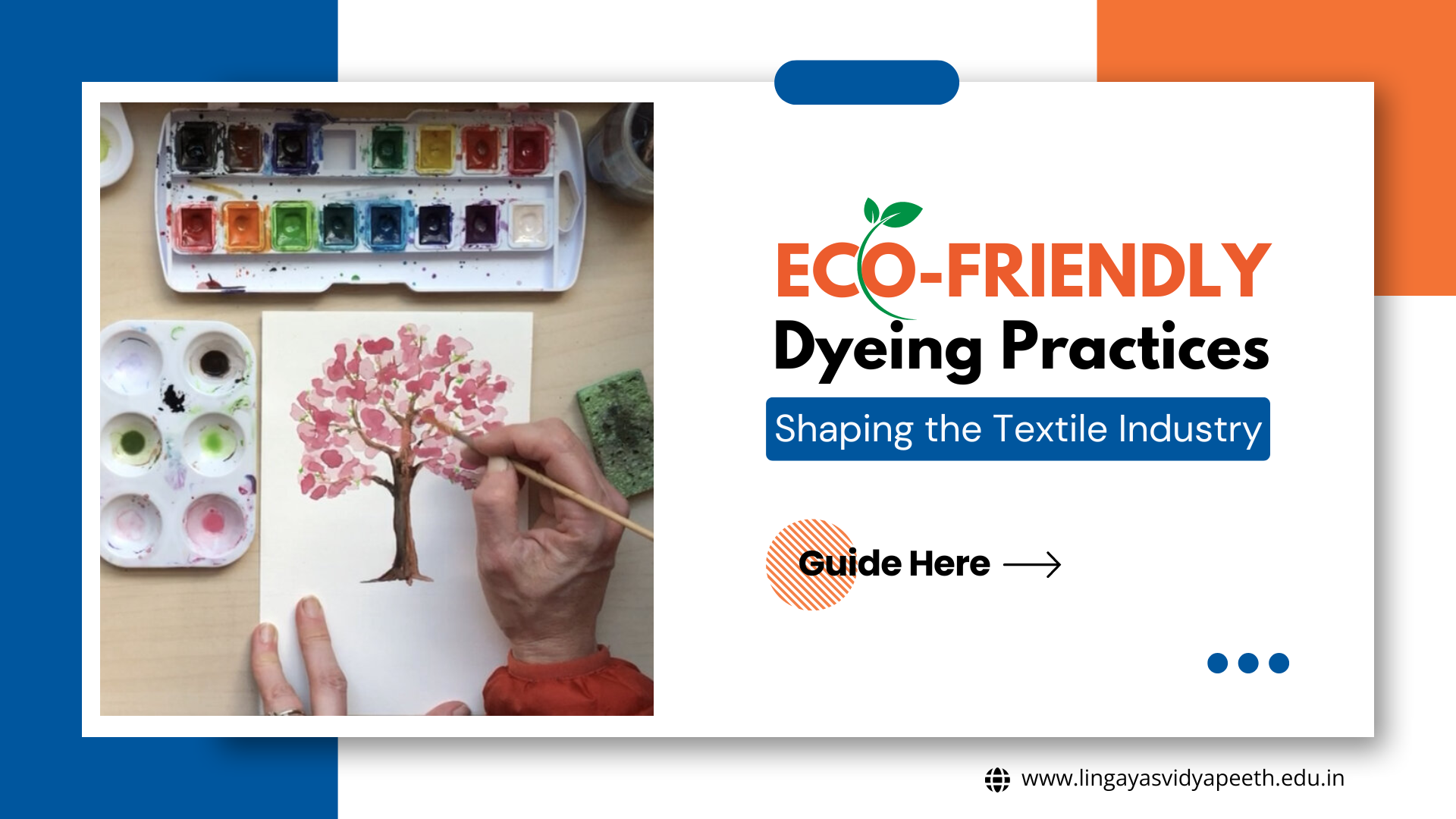Home » Eco-Friendly Dyeing Practices Shaping the Textile Industry | Guide Here!

Fast fashion may boast a kaleidoscope of colors, but its environmental impact casts a dark shadow. Conventional dyeing processes are major polluters, releasing harmful chemicals into waterways and consuming vast amounts of water. But fear not, eco-conscious fashionistas! A wave of sustainable dyeing practices is emerging, offering a brighter future for both the environment and the clothing we wear.
Eco-Friendly dyeing prioritizes practices that minimize the environmental impact of coloring textiles. This can involve several approaches:
Design creates culture – School of design
Eco-Friendly dyeing practices offer a multitude of benefits:
Eco-Friendly dyeing practices are making waves across the textile industry:
Short-Term Certificate Courses to Boost your Career in Fashion Design
While the benefits are undeniable, Eco-Friendly dyeing practices still face challenges:
Unveiling the full potential of Eco-Friendly dyeing requires collaboration:
Conclusion-
Eco-Friendly dyeing practices offer a path towards a more responsible and eco-conscious fashion industry. By embracing natural dyes, bio-based alternatives, and low-impact options, we can create a world where fashion retains its vibrancy, but its environmental impact fades. With continued innovation, collaboration, and commitment, we can paint the world green one sustainable dye at a time.
Do you wish to pursue a short-term certificate course in textile, dyeing and painting from the best university in Delhi NCR? Think no more, Choose Lingaya’s Vidyapeeth to pursue B.Sc Fashion design and short-term certificate course to benefit from our innovative curriculum blending theory with practical experience, top faculty and state-of-the-art facilities ensure holistic learning. Join Lingaya’s Vidyapeeth now to embark on a journey of excellence!
From
Shilpa Dennis
School of Design
Lingaya’s Vidyapeeth
Fashion Design Colleges in Faridabad
RECENT POSTS
CATEGORIES
TAGS
Agriculture Agriculture future AI Architecture artificial intelligence Bachelor of Commerce BA English BA Psychology BTech AIML BTech CSE BTech cybersecurity BTech Engineering Business management career Career-Specific Education career guide career option career scope Civil engineering commerce and management Computer Science Computer science engineering Data science degree education Engineering Engineering students English Literature english program Fashion Design Fashion design course Higher Education Journalism journalism and mass communication law Law career Machine Learning mathematics MBA MBA specialization Mechanical Engineering Pharmacy Psychology Research and Development students
Nachauli, Jasana Road, Faridabad, Haryana
Address: C-72, Second Floor, Shivalik, Near Malviya Nagar,
Above HDFC Bank, New Delhi 110017
Landline No. - 011-46570515 / 45138169 / 41755703
Mobile No. - +91-7303152412 / +91-7303152420 / +91-9311321952
Toll Free: 1800-120-4613
Mobile : 8447744303 | 8447744304 | 8447744306 | 8447744309
8700003974 | 8700003411 | 8700003749
Copyrights © 1998 - 2025 Lingaya's Vidyapeeth (Deemed To Be University). All rights reserved.
LV only conducts physical/online verification of any document related to examination on the following email id:
It is important to note that the following email IDs and domains are fraudulent and do not belong to our university.